Let's travel through Italy's most beautiful villages, places set amidst the wonder of an ever-generous and inviting nature and a dense historical and artistic tradition (find more here).
We have chosen four destinations, one more enchanting than the other. The common thread of our itinerary? A spectacular region in central Italy. Here is our journey in Le Marche.

A journey in Le Marche: Grottammare, Offagna, Sarnano, Urbino
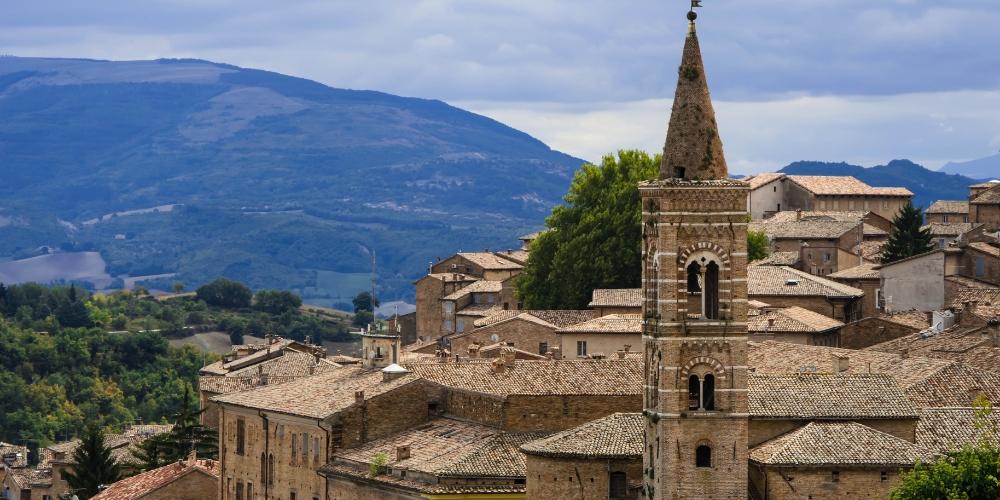
Not only Urbino, with the glittering palaces of its Ducato, the genius of the most famous artists, and the young and sparkling dolce vita of the historic centre.
We'll also tell you about a beautiful town overlooking the sea that is so 'precious' to be known as the Pearl of the Adriatic. And about a place where musicians play definitely unusual instruments. And yet another featuring a street where you have to stroll along rigorously looking all around.
If you like small villages with fairy-tale details (like this little gem in the Province of Pesaro and Urbino) and love to explore the environment with the same interest as you do urban trekking (here is a location perfect for both), then you should take a look at our suggestions. Let's start!
Grottammare, the first stop of our journey in Le Marche
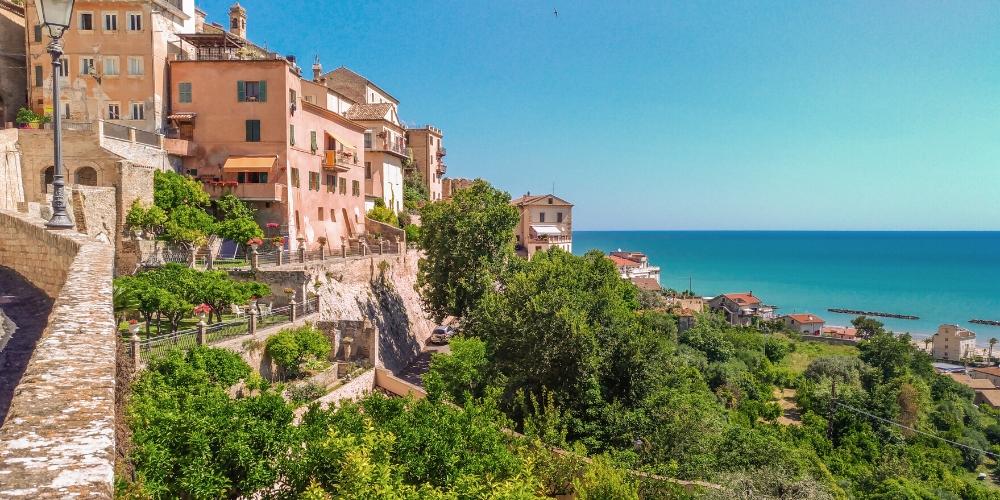
There must be for a good reason if so many holidaymakers choose to spend their summer in Grottammare year after year. This ancient sun-kissed town overlooking the Adriatic Sea and featuring Blue Flag beaches is a delight to discover.
The Art Nouveau style of the early 20th-century holiday homes is the boldest and most refined testimony to a long tourist tradition.
As you stroll in the shade of the palm trees in Viale Cristoforo Colombo, the lovely promenade paved in white Carrara marble, you'll come across some of the most classic forms in which this style has been declined in Grottammare: turrets, frescoes and majolica tiles.
Nevertheless, whimsical Art Nouveau buildings are scattered throughout the whole town and not only along the coastline.
What to see in Grottammare
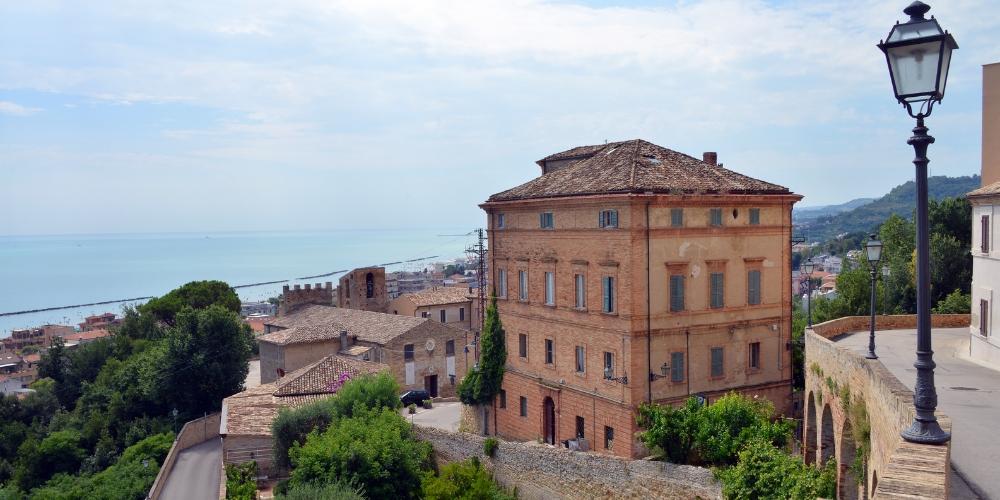
Walk through the small streets of the village and take advantage of its treasures, such as the 18th-century Teatro dell'Arancio in Piazza Peretti, a charming and panoramic area. And the operas by the sculptor that Jackie Kennedy loved, Pericle Fazzini. You'll soon understand why Grottammare is called the Pearl of the Adriatic.
The town's churches are worth a visit: the 10th-century Chiesa di San Martino, the churches of Sant'Agostino and San Giovanni Battista, the latter home to the Sistine Museum, and the church of Santa Maria dei Monti, the so-called Oasis of Grottammare, which stands on a small hill not far from the centre.
Enrich your stay with a museum outing: the Museum of Comic Illustration at the Kursaal, once one of the most famous discos on the Adriatic coast, and Il Tarpato, dedicated to the naive painter Giacomo Pomili.
These, of course, are just a few suggestions. But if you are seriously considering travelling in Le Marche, we suggest you click here and discover all the tips by Marche Tourism.
Offagna, a small world from the past
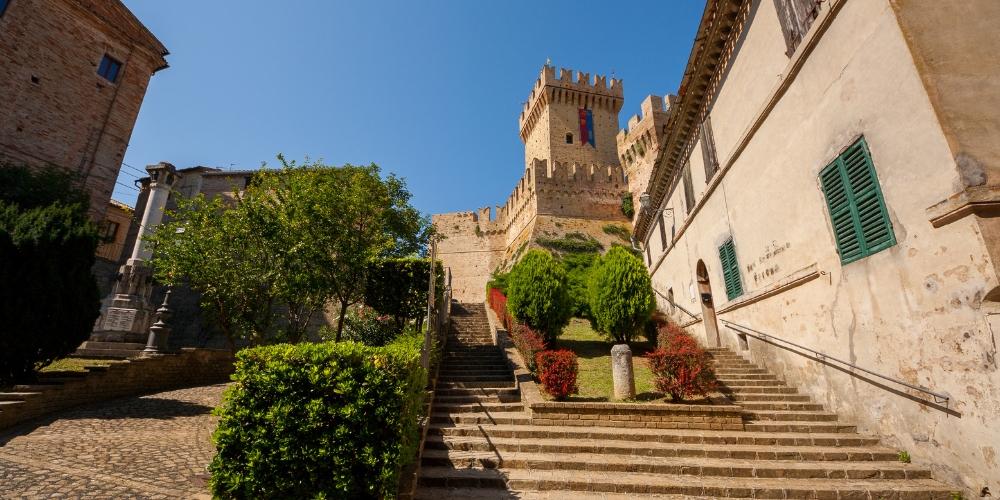
Passing under the small, dark tunnel of Offagna's clock tower is like jumping into two parallel and complementary worlds. On one side is the mediaeval core of Piazza del Comune, and on the other, clearly visible and wild, the rocky accumulation on which the town rests. History and nature blend together.
An Orange Flag village included in the circuit of I Borghi più Belli d'Italia, this town on the Conero Riviera stands out for the perfect beauty of its fortress with crenellated towers. The 15th-century castle in Offagna still displays an impassable defence's solemn and majestic appearance.
Reach la rocca by climbing the steps near the church of San Tommaso. Piazza del Maniero offers a magnificent view of the Marchigiane hills, Monte Conero, and the Adriatic Sea.
Speaking of fortresses and panoramas: a village in the province of Fermo has earned a very special nickname. Find out which one here.
Offagna: a perfect journey in Le Marche with an eye on taste and beauty
As well as the medieval village and the castle's beauty, you cannot fail to appreciate the local food specialities. Offagna's crescia is a delicacy not to be missed, a kind of thin piadina stuffed with cold cuts, cheese, herbs or meat. A shame not to try it with other Marche's gluttonies.
Among the first points of interest to look out for as soon as you set foot in Offagna, the church of Santa Lucia stands out for its sober brick façade, contrasted by a delicate interior with marble and wallpapered walls.
Not far away, you can walk along a very singular little street. What is it that makes Via dei Tornei so unique? Small, original artistic compositions decorating house walls. Some are truly bizarre.
Amid nature in Sarnano
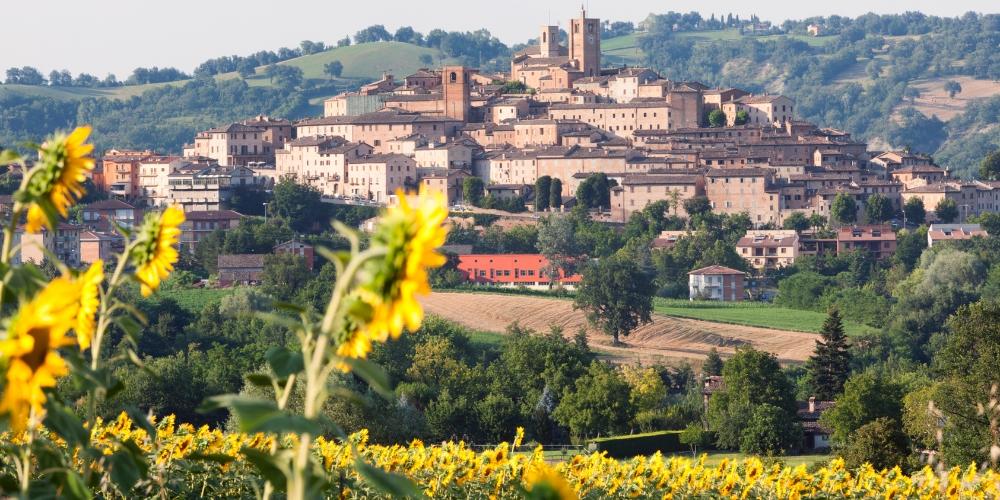
Sarnano is a beautiful medieval village in the Sibillini mountains, surrounded by woods. A perfect place for those seeking an active holiday, given the wide range of trekking and sports activities. To combine with moments of relaxation at the thermal baths.
Sarnano is the starting point of La Via delle Cascate Perdute, an enchanting route that will delight even the youngest visitors (in this article you'll find more about this trek and many other outdoor recommendations in the Marche region).
Sarnano: an impressive journey in Le Marche
Even Sarnano, with its tangle of narrow streets, high and steep steps and houses made of baked stone, is part of the Borghi più Belli d'Italia circuit and has been awarded the Orange Flag.
The historic centre of the fortified village unfolds in concentric circles from Piazza Alta, the main square outlined by the sober Church of Santa Maria Assunta, Palazzo del Popolo, home of the Teatro della Vittoria, Palazzo dei Priori and Palazzo del Podestà.
The journey in this Middle-Age corner is a stroll through time and beauty, with romantic spots (like the small Picasseria square) and places with names evocative of a (who knows!) dark past, such as the 'brutal' Arco dell'Assassino (Assassin's arch).
The village traditions, however, are marked by cheerfulness, a goliardic spirit well represented by La Racchia, the singular local orchestra that gathers improvised musicians equipped with unconventional instruments: frying pans, umbrellas, pipes and flush toilets!
It's not uncommon to come across customs and events that are very particular and well rooted in Le Marche's cultural fabric (for instance, in this article we tell you where to rediscover one of the oldest Italian team games).
It's worth stopping at the former convent of Santa Chiara for a visit to its museum complex, which includes the Picture Gallery, the Museum of Sacred Art, the Museum of Arms and Hunting, the Martelli Museum and the Museum of the Avifauna and Flora of the Apennines.
Urbino: art, history and much more
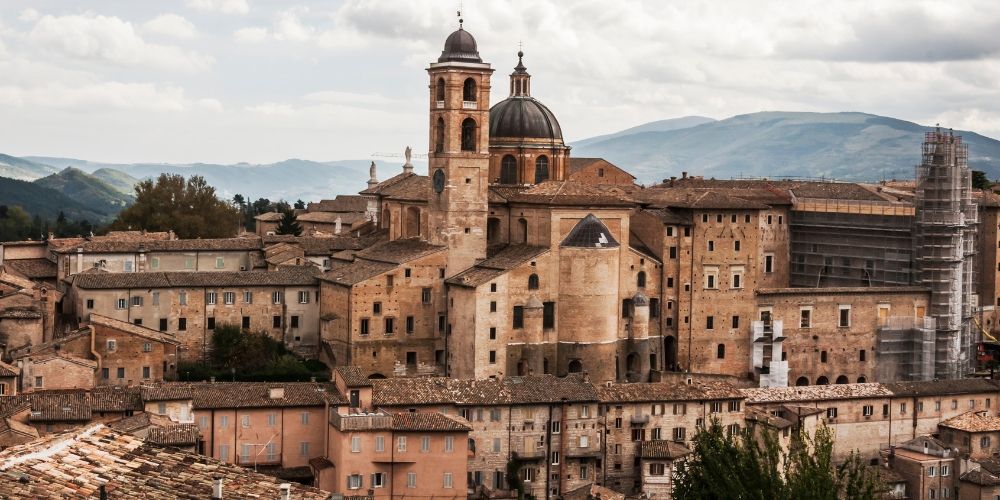
Urbino is one of the symbolic cities of the Italian Renaissance, a must-see place to visit once in a lifetime. To discover the marvellous UNESCO World Heritage Site is to immerse oneself in the city's artistic and cultural past. That of Raphael, Piero della Francesca and Federico da Montefeltro, who gave it form and prestige.
There are loads of things to see and spots where to spend your time while in town: the imposing Duomo, the 15th-century building where Raphael was born, the rich Museo Diocesano, or the frescoed Oratorio San Giovanni are just a few of them.
The image of exquisite elegance in form and substance outlining Urbino's most emblematic places is counterbalanced by the city's other face. A lively and festive side that it shows to the hordes of university students who fill it with noise and exuberance.
Urbino, a lively city to explore
After marvelling at the Galleria Nazionale delle Marche masterpieces in the magnificent Palazzo Ducale, the ideal symbol of the power of the ideal lord in the ideal town, treat yourself to an aperitif under the porticos of Piazza della Repubblica and enjoy the sight of the heterogeneous crowd that populates the area.
Urbino is a vibrant centre full of events, shows and festivals that enhance its cultural offerings. A city of art steeped in antiquity but also fresh and contemporary.
The best place to admire all its immense beauty? Il Parco della Resistenza, a green park in the shadow of the grand Albornoz fortress. The location is perfect for an unforgettable picnic, so don't forget to take your meal with you!
About the author
Written on 04/01/2023


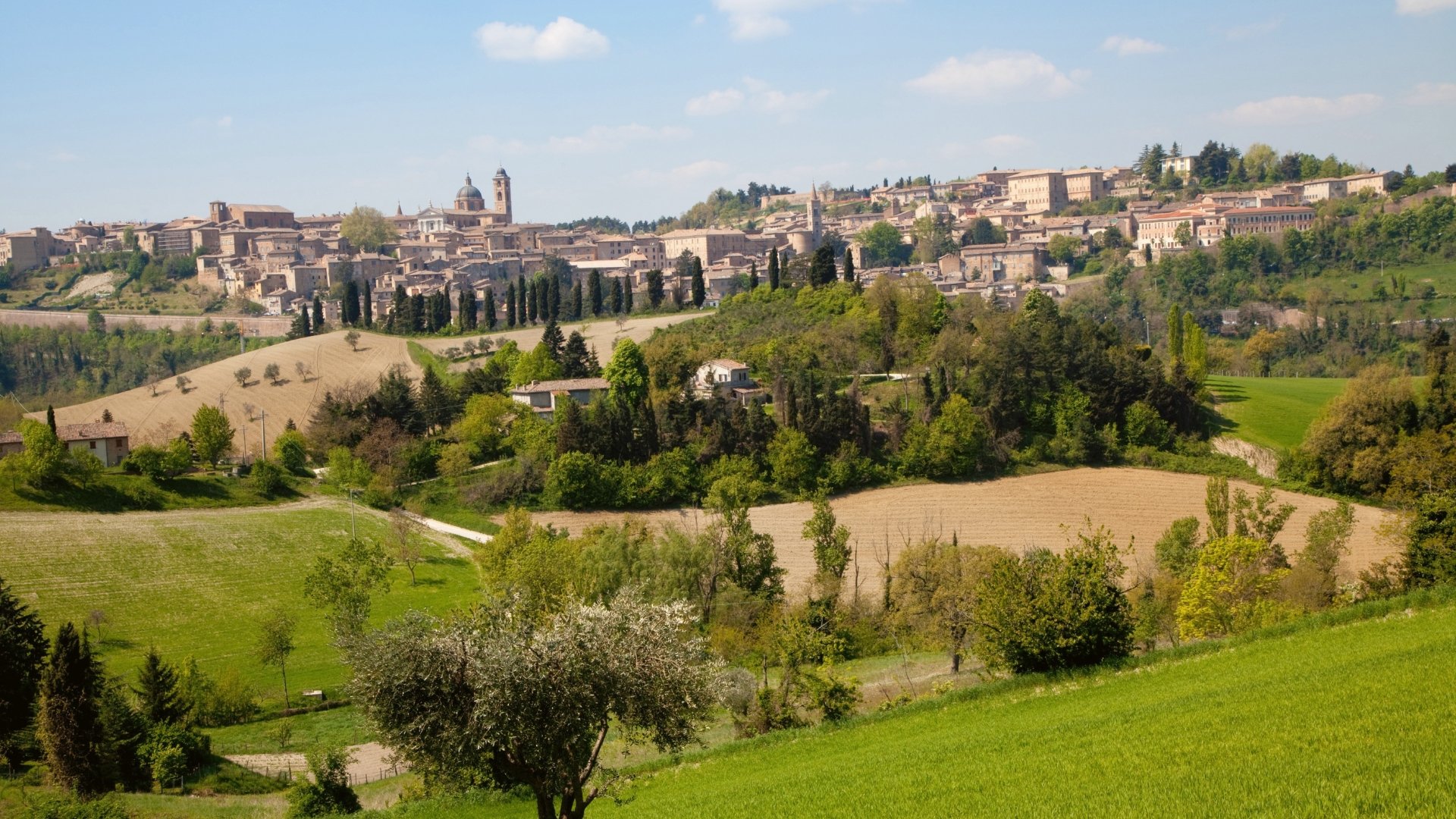
Lorena Calise
A journey in Le Marche in four unmissable stops. From the artistic villages with a sea view to the city symbol of the Renaissance.